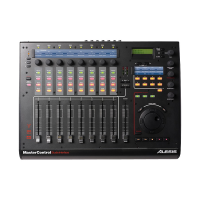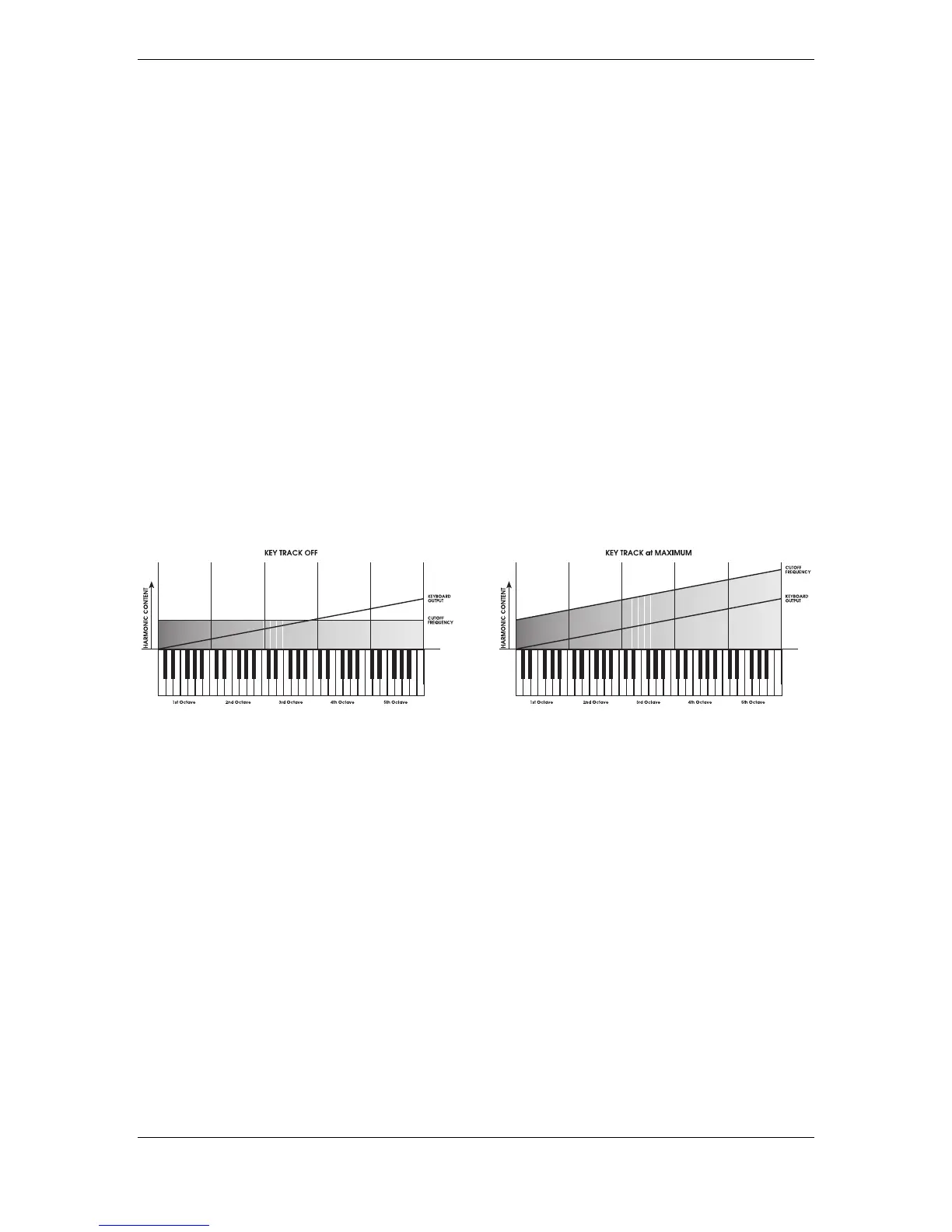Chapter 5: Oscillators and Filters
ANDROMEDA A6 REFERENCE MANUAL 121
filter has its resonance boosted at 8kHz, producing a noticeable “hump” in
waveform’s harmonic amplitude just before the cutoff slope begins. To our ears,
increasing resonance produces a kind of “ringing” or “whistling” effect on the sound.
At its highest setting – fully clockwise – the resonance of
FILTER 2 breaks into
oscillation and will output a sine wave near the same loudness as the VCOs. You can
then “tune” this sine wave to a particular key. If
KEY TRACK is active, you can play
the resonance wave like a VCO. See the next topic. This os called “self-oscillation.”
Key Track
As you play the A6’s keyboard, the VCOs respond to pressed keys by playing the
appropriate notes. When a key is pressed, the keyboard sends an electronic message
that tells the two VCOs on a voice what frequency – or note – to play. Because the
keyboard is tracking the VCOs, playing on the upper range of the keyboard plays
high notes (high frequencies) and playing on the lower range of the keyboard plays
low notes (low frequencies). This principle can be applied to the filters as well.
Unless instructed to do otherwise, the filters will output frequencies at a certain
frequency as set by the FREQ knob. For most musical applications, this is not very
useful because the lowest notes would have the right amount of harmonics but
higher notes wouldn’t have enough and would sound dull as illustrated by the graph
on the left. When the cutoff frequency is fixed, notice that all harmonics above the
line have been filtered out.
The KEY TRACK knob is used to set the amount of tracking effect that the A6’s
keyboard (or received MIDI notes) has on the filters. At its midpoint setting of
+50.00 the filters will be tracked by the keyboard or MIDI by the same amount as
the VCOs. At this setting, the VCOs and filters track in parallel so that high notes,
low notes or anything in between will have the same proportion of harmonics as
illustrated by the graph on the right. And, if the filter's resonance is high enough to
send it into oscillation, a
KEY TRACK of 50.00 will make the oscillation play in the
correct octave up and down the keyboard.
Modulation
Both filters have five modulation inputs. This means that the initial cutoff frequency,
set by the
FREQ knob, is a modulation destination that can be modulated by five
modulation sources:
MOD 1, MOD 2 and MOD 3 are customizable modulations (you pick
the source) plus
KEY TRACK and ENV 2 AMOUNT which sets the amplitude of Envelope
2 shaping the harmonic content.

